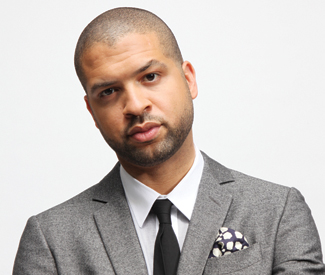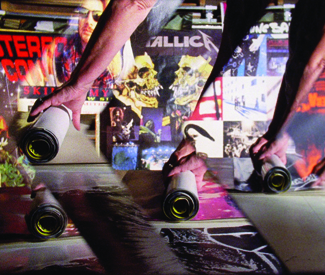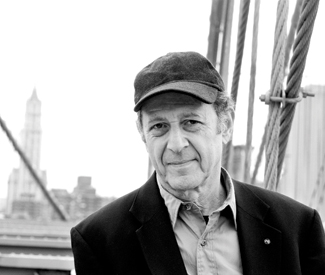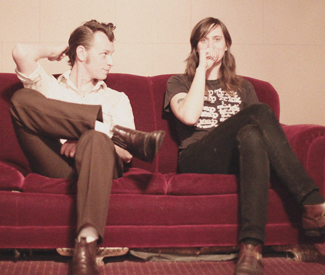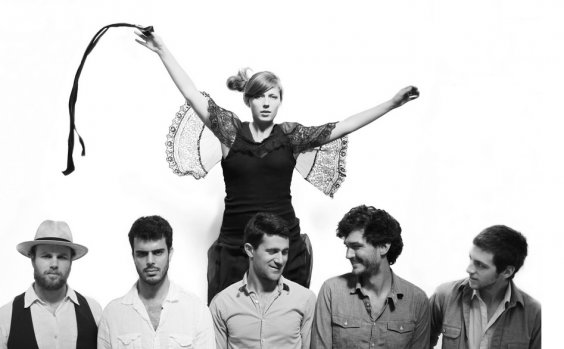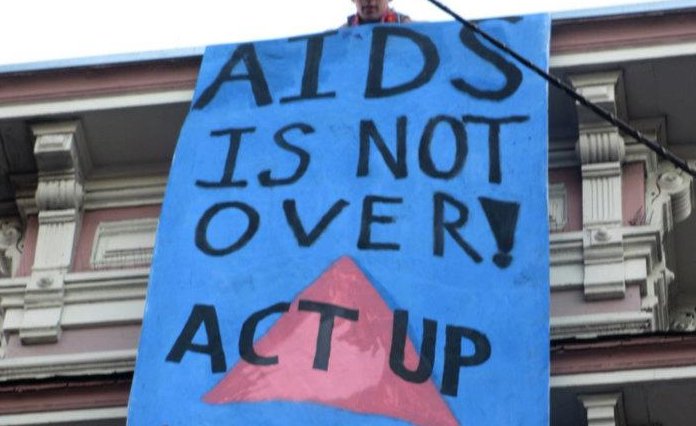Since club life is unpredictable, it’s a good idea to call ahead or check the venue’s website to confirm bookings and hours. Prices are listed when provided to us. Visit www.sfbg.com/venue-guide for venue information. Submit items for the listings at listings@sfbg.com. For further information on how to submit items for the listings, see Picks.
WEDNESDAY 29
ROCK/BLUES/HIP-HOP
Akron/Family, Avi Buffalo, M. Geddes Gengras Independent. 8pm, $15.
Darren Criss Fillmore. 8pm, $25.
“Drinking/Songs: A Night of Beer and the Music that Goes With It” 50 Mason Social House, SF; www.50masonsocialhouse.com. 8pm, $20.
Guido vs Jason Marion Johnny Foley’s Dueling Pianos. 10pm, free.
Lissie Great American Music Hall. 8pm, $18-$20.
Mofo Party Band Biscuits and Blues. 8 and 10pm, $16.
ReCardiacs Fly, Listo, Dominique Leone Hemlock Tavern. 8:30pm, $7.
Terry Savastano Johnny Foley’s. 10pm, free.
Secret Secretaries, Standard Poodle, Skinaffect Knockout. 9:30pm, $6.
Torreblanca, Diana Gameros, Salt Petal Brick and Mortar Music Hall. 9pm, $15.
Vandella, Buckeye Knoll, Hills Like Elephants Bottom of the Hill. 9pm, $10.
JAZZ/NEW MUSIC
Dink Dink Dink, Gaucho, Eric Garland’s Jazz Session Amnesia. 7pm, free.
Terry Disley Burritt Room, 417 Stockton, SF; www.burrittavern.com. 6-9pm, free.
Freddie Hughes Royal Cuckoo, 3203 Mission, SF; www.royalcuckoo.com. 7:30-10:30pm, free.
Christopher O’Riley Yoshi’s SF. 8pm, $30.
Joel Robinow Rite Spot. 9pm.
DANCE CLUBS
Booty Call Q-Bar, 456 Castro, SF; www.bootycallwednesdays.com. 9pm. Juanita MORE! and Joshua J host this dance party.
Cash IV Gold Double Dutch, 3192 16th St, SF; www.thedoubledutch.com. 9pm, free.
Coo-Yah! Slate Bar, 2925 16th St, SF; www.slate-sf.com. 10pm, free. With Vinyl Ambassador, DJ Silverback, DJs Green B and Daneekah.
Hardcore Humpday Happy Hour RKRL, 52 Sixth St, SF; (415) 658-5506. 6pm, $3.
Martini Lounge John Colins, 138 Minna, SF; www.johncolins.com. 7pm. With DJ Mark Divita.
Douglas McCarthy, Octavius, DJ Crackwhore Elbo Room. 9pm, $15.
Stay Sick with DJ Omar Monarch. 9pm, free.
Timba Dance Party Bissap Baobab, 3372 19 St, SF; www.bissapbaobao.com. 10pm, $5.
THURSDAY 30
ROCK/BLUES/HIP-HOP
Abatis, My Stupid Brother, Coffee Shop Dropout, Relic 45 Milk Bar. 8:30pm, $7.
Brad Wilson Band Biscuits and Blues. 8 and 10pm, $15.
!!!, popscene DJs Rickshaw Stop. 9:30pm, $15-$20.
Gunshy Johnny Foley’s. 10pm, free.
Castle, Demon Lung Bottom of the Hill. 8:30pm, $7.
Comeback Kid, Alpha and Omega, Twitching Tongues, Let It Burn DNA Lounge. 8pm, $15.
Magic Fight, Kids on a Crime Spree, Teenage Sweater Amnesia. 9pm, $7-$10.
New Diplomat, Via Coma, Scene of Action, Nathan Blaz (DJ) Independent. 8pm, $14.
Peace, Team Spirit Brick and Mortar Music Hall. 9pm, $15.
ReCardiacs Fly, Listo, Dominique Leone Hemlock Tavern. 8:30pm, $7.
“SFRMA.org performs the Smiths and Joy Division” Great American Music Hall. 8pm, $18-$20.
“Spring Happy Hour and Mixer for a Cause” Bissap Baobab, 3372 19 St, SF; www.bissapbaobao.com. 6pm. With Defective.
Greg Zema vs Jeff V. Johnny Foley’s Dueling Pianos. 10pm, free.
JAZZ/NEW MUSIC
Jascha Hoffman Rite Spot. 9pm.
Carlos Reyes Yoshi’s SF. 8pm, $25.
Chris Siebert Royal Cuckoo, 3203 Mission, SF; www.royalcuckoo.com. 7:30-10:30pm, free.
Zeek Sheck, Wiggwaum, Wobbly, Moe! Staiano, Commode Minstrels in Bullface, Murder Murder, Headboggle Lab, 2948 16 St., SF; www.thelab.org. 8pm, $5-$10.
Miguel Zenon’s Rhythm Collective SF Jazz Center, 201 Franklin, SF; www.sfjazz.org. 7:30pm, $20-$40.
FOLK/WORLD/COUNTRY
Rabbit Quinn Lost Church, 65 Capp, SF; www.thelostchurch.com. 7:30pm, $10.
PA Slim Tupelo, 1337 Grant, SF; www.tupelosf.com. 9pm.
DANCE CLUBS
Afrolicious Elbo Room. 9:30pm, $8. Afrobeat, Tropicália, electro, samba, and funk with J. Boogie.
All 80s Thursday Cat Club. 9pm, $6 (free before 9:30pm). The best of ’80s mainstream and underground.
Foxy ft. DJ Kizmiaz Monarch Lounge. 9pm, free.
Pa’lante! Bissap Baobab, 3372 19 St, SF; www.bissapbaobao.com. 10pm, $5. With DJs Juan G, El Kool Kyle, Mr. Lucky.
Ritual Temple. 10pm-3am, $5. Two rooms of dubstep, glitch, and trap music with DJs Swindle, Smoke Signals, 5th Bar Drop.
Tropicana Madrone Art Bar. 9pm, free. Salsa, cumbia, reggaeton, and more with DJs Don Bustamante, Apocolypto Sr. Saen, Santero, and Mr. E.
FRIDAY 31
ROCK/BLUES/HIP-HOP
Back Pages Johnny Foley’s. 10pm, free.
Birds of Chicago, Melody Walker Amnesia. 9pm.
Destroid, Excision, Downlink, KJ Sawka, Designer Drugs, DJ Dials Warfield. 9pm, $45.
Shane Dwight Biscuits and Blues. 8 and 10pm, $22.
Finch, Requiem for the Dead, Plus, Reverend Crow Slim’s. 9pm, $26.
Fox and Woman, Doe Eye, Debbie Neigher Bottom of the Hill. 9:30pm, $10.
“Funk Out With R.O.C.K” Mighty, 119 Utah, SF; www.rocksf.org. 8pm, $25. Benefit with Stymie and the Pimp Jones Luv Orchestra.
“Hop Rockabilly Prom” Elbo Room. 9pm, $13. With Sugar Daddys, Rocketz, DJ Tanoa Samoa Boy.
Lemonade, Willy Moon, popscene DJs Rickshaw Stop. 9:30pm, $12-$14.
Mice Parade, Hi Ho Silver Oh Brick and Mortar Music Hall. 9pm, $12.
Peachelope, Gregors, Tet Holiday Hemlock Tavern. 9:30pm, $7.
Chuck Prophet and the Mission Express, John Murry Great American Music Hall. 9pm, $20.
Solwave, Sam Chase, Down and Outlaws Independent. 9pm, $14.
Sugar Candy Mountain, Sunbeam Rd., Li Xi, Torches Milk Bar. 9:30pm, $10.
Trophy Fire, Ghost and the City, Ghost Parade Café Du Nord. 9:30pm, $12.
Jeff V. vs Jason Marion Johnny Foley’s Dueling Pianos. 10pm, free.
Quaadudes Abbey Tavern, 4100 Geary, SF; www.abbeytavern-sf.com. 9:30pm, free.
Vernian Process, Roadside Memorial, Sorrow Church, Michion DNA Lounge. 8:30pm, $6.
JAZZ/NEW MUSIC
Abduhl and the Night Visitors Bissap Baobab, 3372 19 St, SF; www.bissapbaobao.com. 7pm, free.
Audium 1616 Bush, SF; www.audium.org. 8:30pm, $20. Theater of sound-sculptured space.
Hammond Organ Soul Jazz, Blues Party Royal Cuckoo, 3203 Mission, SF; www.royalcuckoo.com. 7:30-10:30pm, free.
Miguel Zenon: Alma Adentro SF Jazz Center, 201 Franklin, SF; www.sfjazz.org. 7:30pm, $25-$45.
FOLK/WORLD/COUNTRY
Alexander Abreu and Havana D’Primera Yoshi’s SF. 8pm, $32; 10pm, $24.
Steve Freund Band Tupelo, 1337 Grant, SF; www.tupelosf.com. 9:30pm.
DANCE CLUBS
Dancing Ghosts Cat Club. 9:30pm, $3-$7. World Goth Day.
Jazzanova, Fred Everything, Joey Alaniz Monarch. 10pm, $10-$15.
Joe Lookout, 3600 16th St.,SF; www.lookoutsf.com. 9pm. Eight rotating DJs, shirt-off drink specials.
Old School JAMZ El Rio. 9pm. Fruit Stand DJs spinning old school funk, hip-hop, and R&B.
Paris to Dakar Little Baobab, 3388 19th St, SF; (415) 643-3558. 10pm, $5. Afro and world music with rotating DJs including Stepwise, Steve, Claude, Santero, and Elembe.
Trap and Bass DNA Lounge. 9pm, $10. With Luminox.
SATURDAY 1
ROCK/BLUES/HIP-HOP
Back Pages Johnny Foley’s. 10pm, free.
Blank Realm, Hank IV Hemlock Tavern. 9:30pm, $7.
City of Women, Books on Fate, Cash Pony Rickshaw Stop. 9pm, $10.
Daikon, Brick Mower, Bastards of Young, Know Your Saints Thee Parkside. 3pm, $5.
Dead Westerns Riptide. 9pm, free.
Destroyer (tribute to Kiss), Roses and Guns Great American Music Hall. 9pm, $13.
Fistfuls of Funk, Breakestra, Deejay Saurus, DJ Platurn, Paulie Rhyme Brick and Mortar Music Hall. 9pm, $20.
Logic, Skizzy Mars, Castro, Quest Fillmore. 8pm, $15.
Mark Matos and Os Beaches, Electric Shepherd, Linear Downfall, Buzzmutt Thee Parkside. 9pm, $8.
Coco Montoyo Biscuits and Blues. 8 and 10pm, $22.
Mystery Jets Independent. 9pm, $15.
“SF Rock Project” Thee Parkside. 1pm, $5. Golden Gate Rockers, Arena Rock.
Stellar Corpses, Make a Scene, Heroes at Gunpoint, Wild Ones Slim’s. 9pm, $15.
Trixie Whitley, Rocco Deluca Chapel, 777 Valencia, SF; www.thechapelsf.com. 9pm, $15.
JAZZ/NEW MUSIC
Alexander Abreu and Havana D’Primera Yoshi’s SF. 8pm, $32; 10pm, $28.
Audium 1616 Bush, SF; www.audium.org. 8:30pm, $20. Theater of sound-sculptured space.
Hammond Organ Soul Jazz, Blues Party Royal Cuckoo, 3203 Mission, SF; www.royalcuckoo.com. 7:30-10:30pm, free.
Miguel Zenon: Identities SF Jazz Center, 201 Franklin, SF; www.sfjazz.org. 7:30pm, $25-$45.
FOLK/WORLD/COUNTRY
Brazil Vox Revolution Café, 3248 22nd St., SF; (415) 642-0474. 9pm, free.
Conspiracy of Venus Seventh Avenue Performances, 1329 Seventh Ave., SF; www.sevenperforms.org. 7:30pm, free.
Lightbulb Ensemble Emerald Tablet, 80 Fresno, SF; www.emtab.org. 8pm, $10.
Shantytown Tupelo, 1337 Grant, SF; www.tupelosf.com. 9pm.
Water Tower vs Harkenbacks Plough and Stars. 9:30pm, $6-$10.
DANCE CLUBS
Bootie SF DNA Lounge. 9pm, $10-$15.
Cockfight Underground SF, 424 Haight, SF; (415) 864-7386. 9pm, $7. Rowdy dance night for gay boys.
Foundation Som., 2925 16th St, SF; (415) 558-8521. 10pm, $5–<\d>$10. DJs Shortkut, Apollo, Mr. E, Fran Boogie spin Hip-Hop, Dancehall, Funk, Salsa.
Go Bang! Stud, 399 Ninth St., SF; Facebook.com/GoBangSF. Atomic dancefloor disco action with Redux DJs, CarrieOnDisco, Steve Febus, Sergio Fedasz.
Haceteria Deco Lounge, 510 Larkin, SF; www.decosf.com. 9pm, free before 11pm, $3 after.
Paris to Dakar Little Baobab, 3388 19th St, SF; (415) 643-3558. 10pm, $5. Afro and world music with rotating DJs.
Saturday Night Soul Party Elbo Room. 10pm, $5-$10. With DJs Lucky, Paul Paul, and Phengren Oswald.
SUNDAY 2
ROCK/BLUES/HIP-HOP
A Hawk and a Handsaw Café Du Nord. 7:30pm, $14.
Custom Kicks, Blackhands, HeartRacers, Shanghais Thee Parkside. 8pm, $7.
Mantle Sound Core, Clintongore, Date Nite Bottom of the Hill. 9pm, $8.
Melted Toys, Snow White Hemlock Tavern. 6pm, $7.
Rec League, Dregs One, First Dirt, Heat Brick and Mortar Music Hall. 9pm, $8.
Terry Savastano Johnny Foley’s. 10pm, free.
“SF Rock Project Students” Bottom of the Hill. 2pm, $5, all ages. Golden Gate Rockers, Arena Rock.
Bobbie Spider Webb Biscuits and Blues. 7 and 9pm, $15.
JAZZ/NEW MUSIC
Howell Divine Revolution Café, 3248 22nd St., SF; (415) 642-0474. 8:30pm, free.
Dan Hicks and the Hot Licks Yoshi’s SF. 6pm, $18; 8pm, $25.
Kally Price Old Blues and Jazz Band Amnesia. 8pm, $7-$10.
Noertker’s Moxie Musicians’ Union Hall, 116 Ninth St., SF; www.noertker.com. 7:30pm, $10.
Lyle Sheffler St. Mary’s Cathedral, 1111 Gough, SF; www.lylesheffler.com. 3:30pm.
Lavay Smith Royal Cuckoo, 3203 Mission, SF; www.royalcuckoo.com. 7:30-10:30pm, free.
Miguel Zenon with Luis Perdomo, Paoli Mejias SF Jazz Center, 201 Franklin, SF; www.sfjazz.org. 7:30pm, $20-$40.
FOLK/WORLD/COUNTRY
Better Haves Tupelo, 1337 Grant, SF; www.tupelosf.com. 4-7pm, free.
Gravel Spreaders, Up and Down Thee Parkside. 4pm, free.
“Israel in the Gardens” Yerba Buena Gardens, Mission between Third and Fourth Streets, SF; www.ybgfestival.org. 11am-5pm, free.
DANCE CLUBS
Jock Lookout, 3600 16th St, SF; www.lookoutsf.com. 3pm, $2.
Silent Summer Series Kickoff Ocean Beach, Seal Cove, Great Highway at Balboa, SF; www.silentfrisco.com. 1pm, $10-$20.
MONDAY 3
ROCK/BLUES/HIP-HOP
Damir Johnny Foley’s. 10pm, free.
My Jerusalem Café Du Nord. 7:30pm, $10.
FOLK/WORLD/COUNTRY
Barren Vines Tupelo, 1337 Grant, SF; www.tupelosf.com. 9pm.
Classical Revolution Revolution Café, 3248 22nd St., SF; (415) 642-0474. 8pm, free.
Front Country Amnesia. 9pm.
DANCE CLUBS
Bass is Great Elbo Room. 9pm, $5.
Crazy Mondays Beauty Bar, 2299 Mission, SF; www.thebeautybar.com. 10pm, free. Hip-hop and other stuff.
Death Guild DNA Lounge. 9:30pm, $3-$5. With Decay, Joe Radio, Melting Girl.
M.O.M. Madrone Art Bar. 6pm, free. DJs Timoteo Gigante, Gordo Cabeza, and Chris Phlek playing all Motown every Monday.
Soul Cafe John Colins Lounge, 138 Minna, SF; www.johncolins.com. 9pm. R&B, Hip-Hop, Neosoul, reggae, dancehall, and more with DJ Jerry Ross.
Vibes’N’Stuff El Amigo Bar, 3355 Mission, SF; (415) 852-0092. 10pm, free. Conscious jazz and hip-hop with DJs Luce Lucy, Vinnie Esparza, and more.
tuesday
TUESDAY 4
ROCK/BLUES/HIP-HOP
Abigail, Old Coven, Abnutivum Elbo Room. 9pm, $12.
Dirty Hand Family Band, Hopeless Jack and the Handsome Devil, Little Thin Dimes Knockout. 9:30pm, $8.
Fool’s Gold, My Goodness, Mahgeetah Brick and Mortar Music Hall. 9pm, free.
Halcyonaire, Dead Western, Sad Bastard Book Club Bottom of the Hill. 9pm, $9.
Juicy J, ASAP Ferg Fillmore. 8pm, $26.50.
One Hundred Percent, Blanche Beach, Oiler Hemlock Tavern. 8:30pm, $6.
JAZZ/NEW MUSIC
Conscious Jazz Revolution Café, 3248 22nd St., SF; (415) 642-0474. 8:30pm, free.
Terry Disley Burritt Room, 417 Stockton, SF; www.burrittavern.com. 6-9pm, free.
Ron Sexsmith Yoshi’s SF. 8pm, $30.
FOLK/WORLD/COUNTRY
ZouKizomba Bissap Baobab, 3372 19 St, SF; www.bissapbaobao.com. 8pm, $5-$10.

